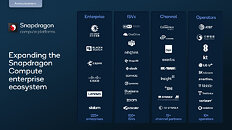Localization of Chip Manufacturing Rising; Taiwan to Control 48% of Global Foundry Capacity in 2022, Says TrendForce
According to TrendForce, Taiwan is crucial to the global semiconductor supply chain, accounting for a 26% market share of semiconductor revenue in 2021, ranking second in the world. Its IC design and packaging & testing industries also account for a 27% and 20% global market share, ranking second and first in the world, respectively. Firmly in the pole position, Taiwan accounts for 64% of the foundry market. In addition to TSMC possessing the most advanced process technology at this stage, foundries including UMC, Vanguard, and PSMC also have their own process advantages. Under the looming shadow of chip shortages caused by the pandemic and geopolitical turmoil in the past two years, various governments have quickly awakened to the fact that localization of chip manufacturing is necessary to avoid being cut off from chip acquisition due to logistics difficulties or cross-border shipment bans. Taiwanese companies have ridden this wave to become partners that governments around the world are eager to invite to set up factories in various locales.








































